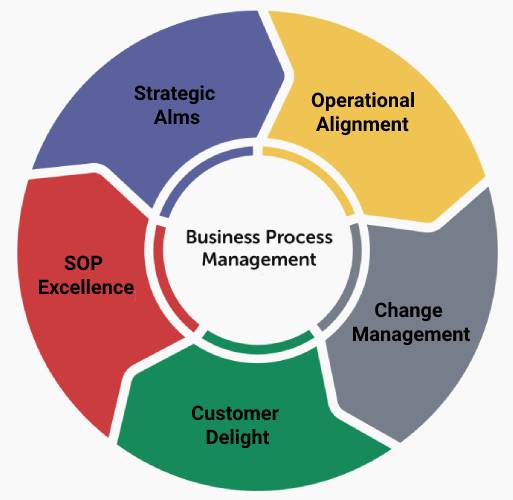

This category focuses on integrating and automating systems, such as enterprise resource management (ERP), customer relationship management (CRM), and human resource management systems (HRMS) applications. Another example is medical organizations that maintain electronic health records. Document-intensive BPM examples can be found in legal, finance, purchasing, and other departments that route contracts and agreements to multiple people for review and signoff. Document-centric BPM frequently uses workflow automation to promote efficiency and accuracy while maintaining compliance.

Processes involving paper- and electronic-based documents must be handled with care and in accordance with company, industry, and regulatory requirements. Another instance is customer complaint processes handled by service representatives. Human-centric BPM examples include hiring processes in which HR personnel work with managers to post job openings, screen candidates, ask for referrals, and interview candidates. In these cases, BPM should empower individuals with well-designed application interfaces and notification and tracking functions. Certain decisions, approvals, and other process tasks are uniquely meant for employees, customers, and other individuals to perform. Largely lacking automation, a human-centric process revolves around people. Broadly define what needs to potentially change-and how-by categorizing the associated business activities into one of three main types of business process management: Look at business areas where progress on meeting company objectives has slowed or stalled. Companies want to invest in high-impact, low-risk projects that deliver measurable results tightly aligned with their KPIs. A structured, cyclical approach based on best practices, the BPM lifecycle provides a useful framework for modernizing operational, management, and support processes.įirst, collaborate with management to create a business process management strategy that supports the organization’s core business goals. These six stages of business process management comprise the BPM lifecycle. And achieve continuous business process improvement through monitoring and analysis.īPM initiatives that drive meaningful change generally encompass the following business process management steps: plan, design, model, implement, monitor, and optimize. More quickly and precisely determine where to deploy workflow automation and other innovative technologies. Through effective BPM initiatives, your company can implement more efficient, flexible processes. Business process management (BPM) is how organizations help ensure that any business process change is the right one. Sometimes leaders and teams tweak processes on the fly other times they completely reengineer them. No two business processes are alike, but all are in a near-constant state of flux. Drive process change that delivers ongoing value


 0 kommentar(er)
0 kommentar(er)
